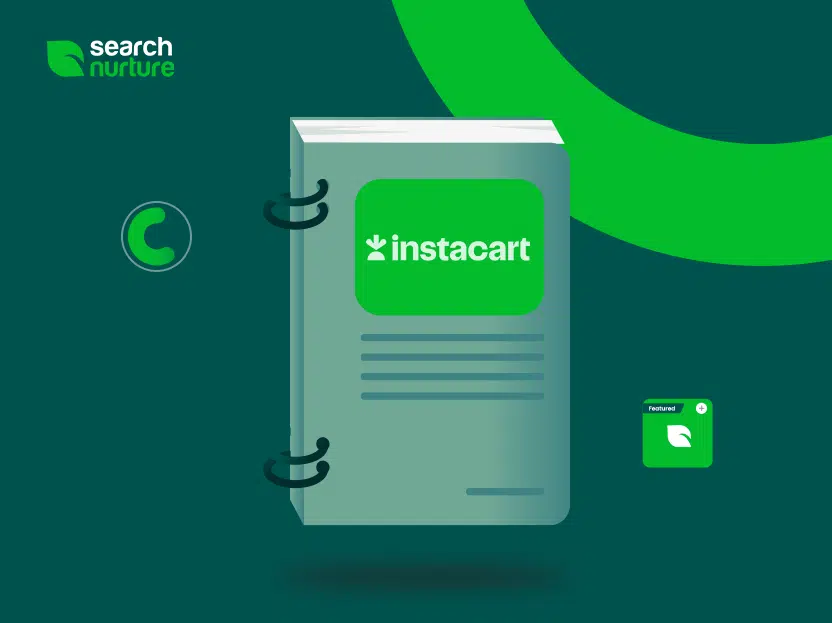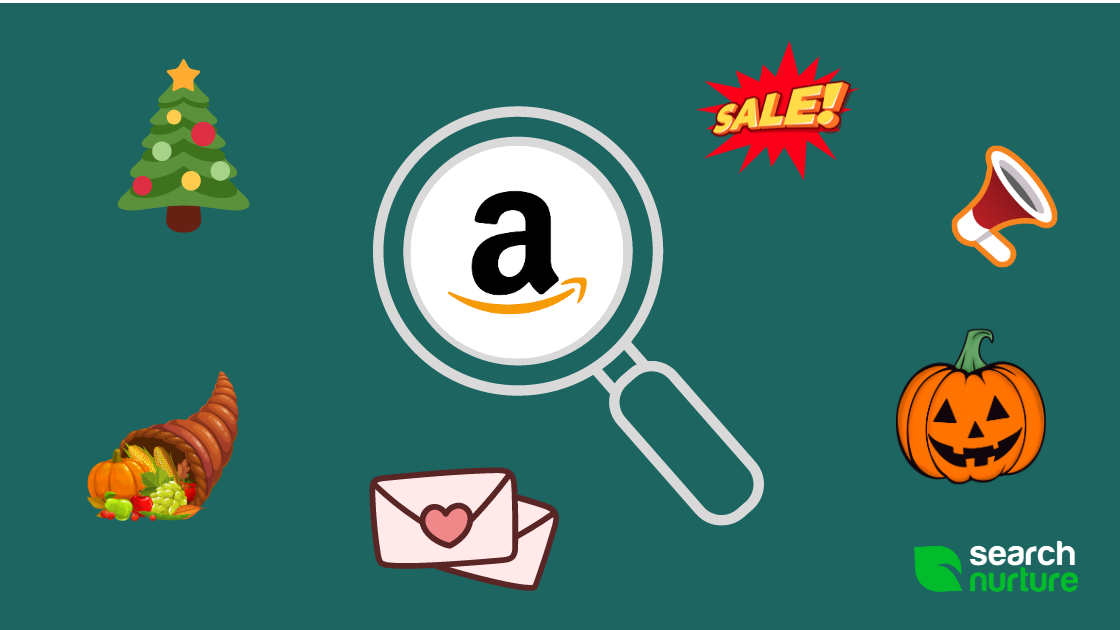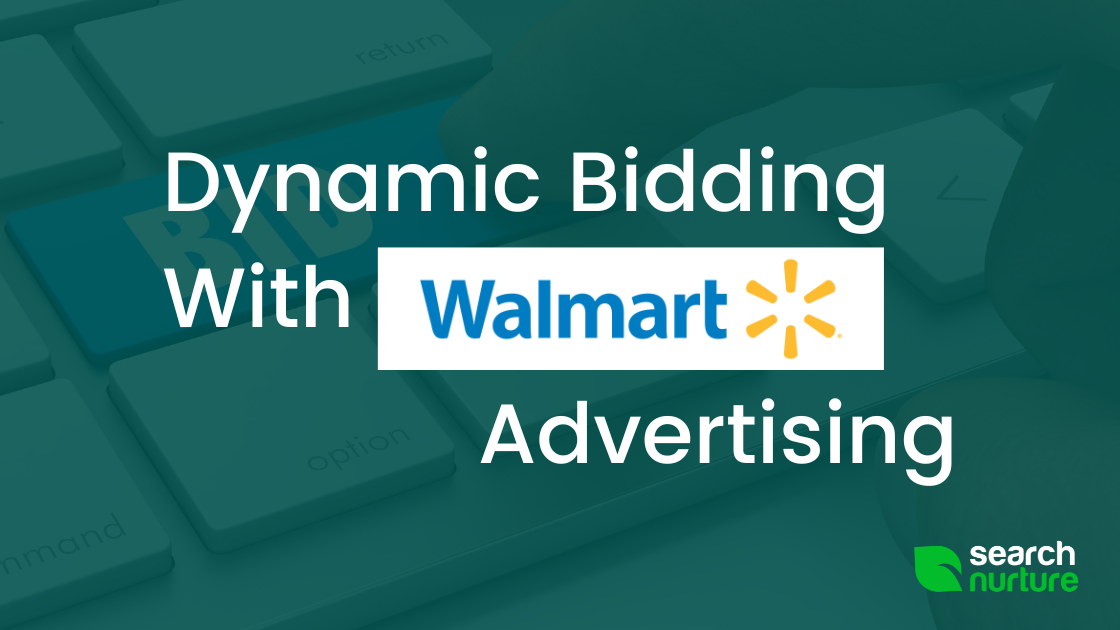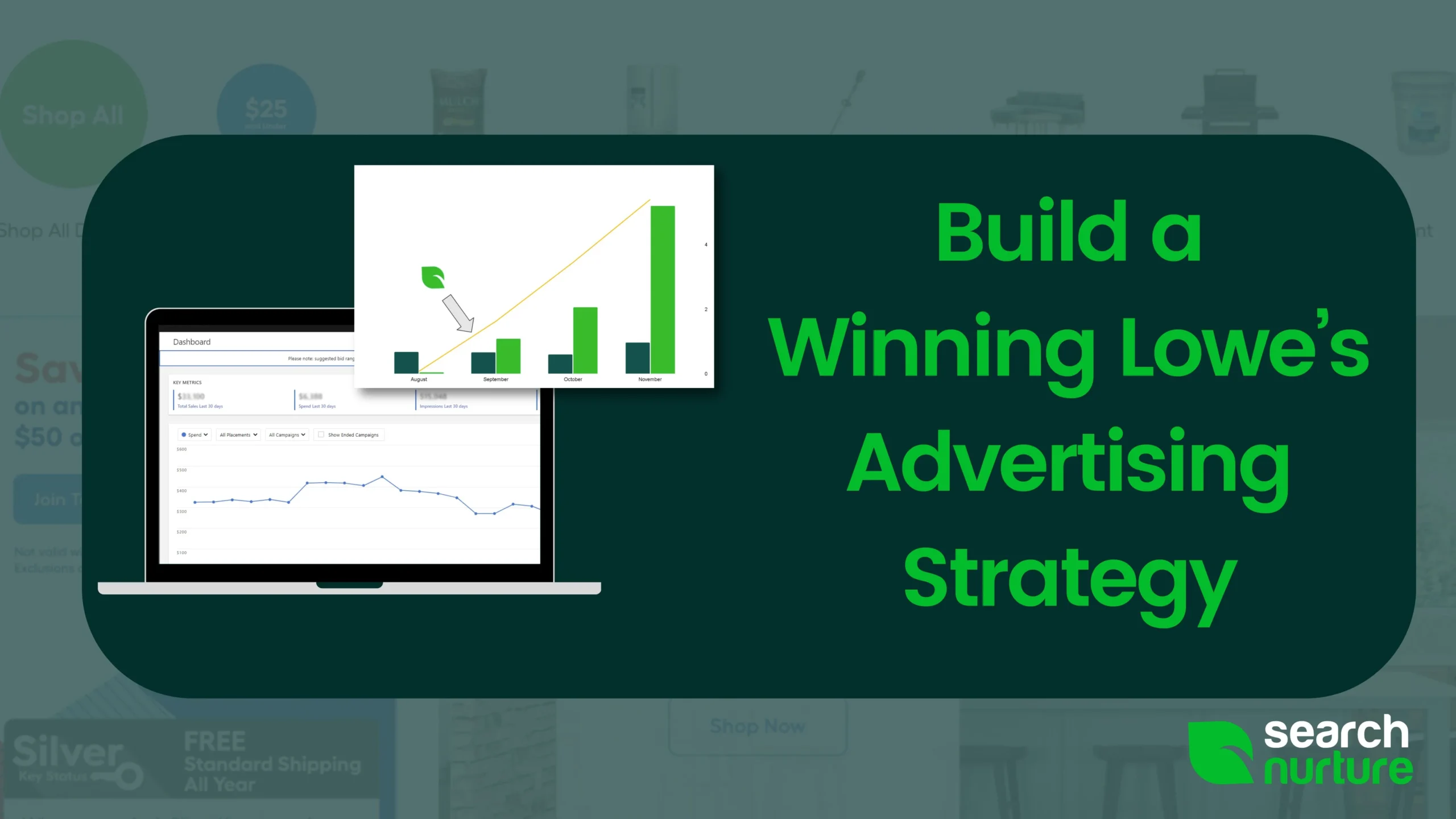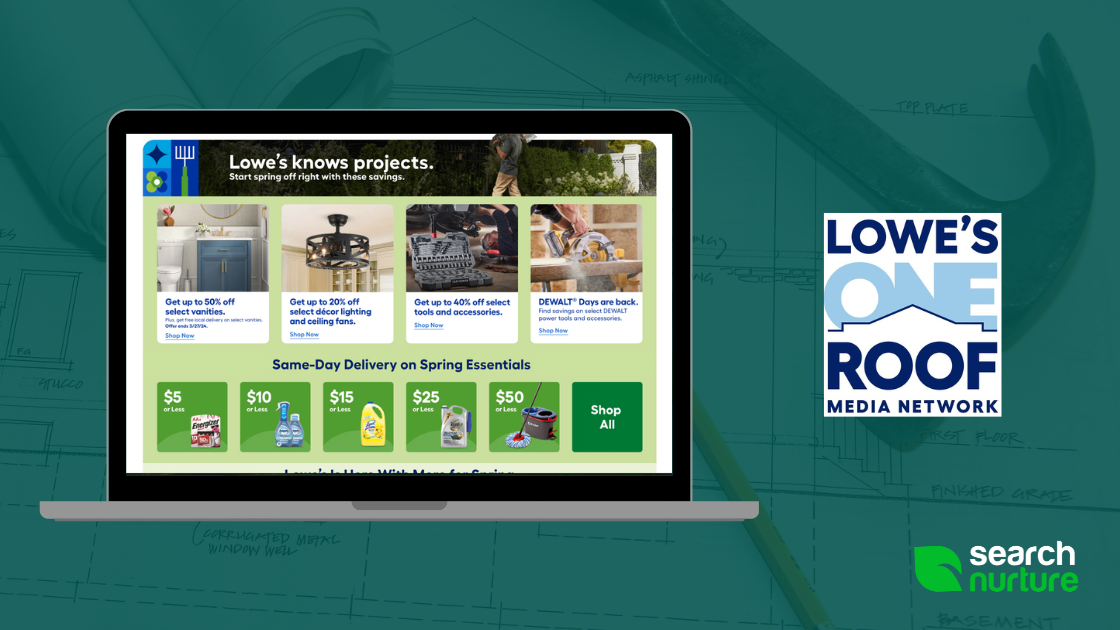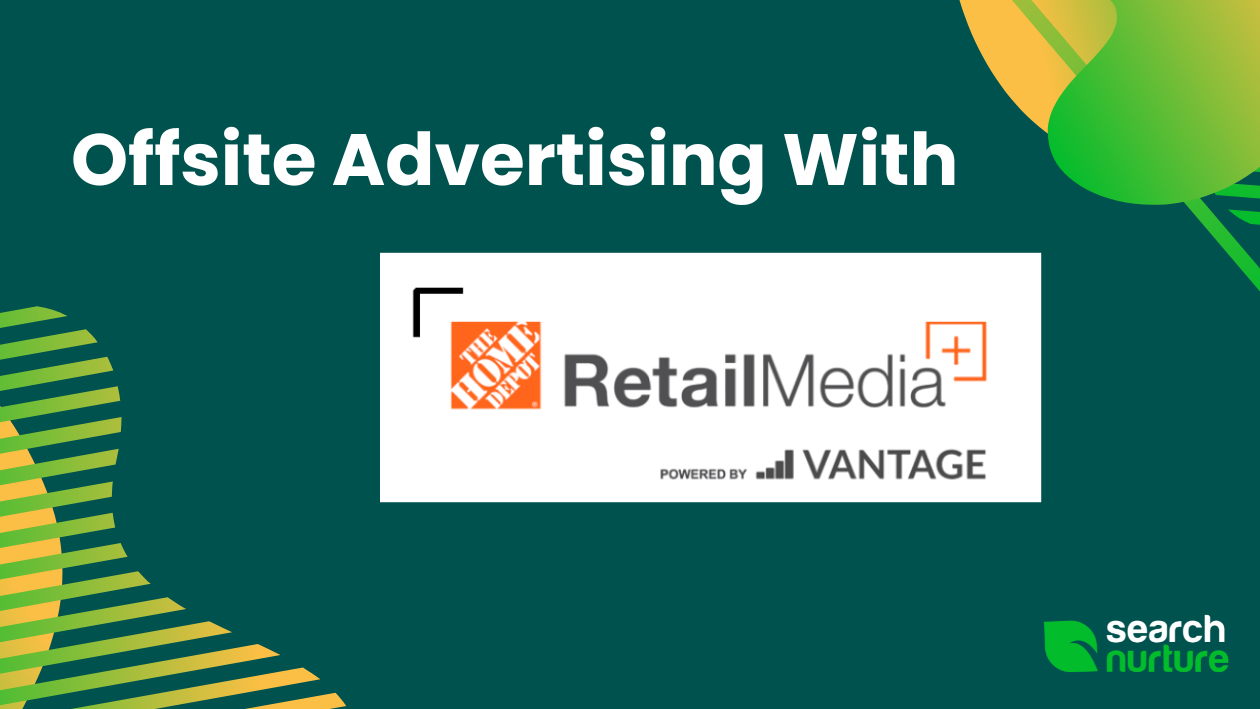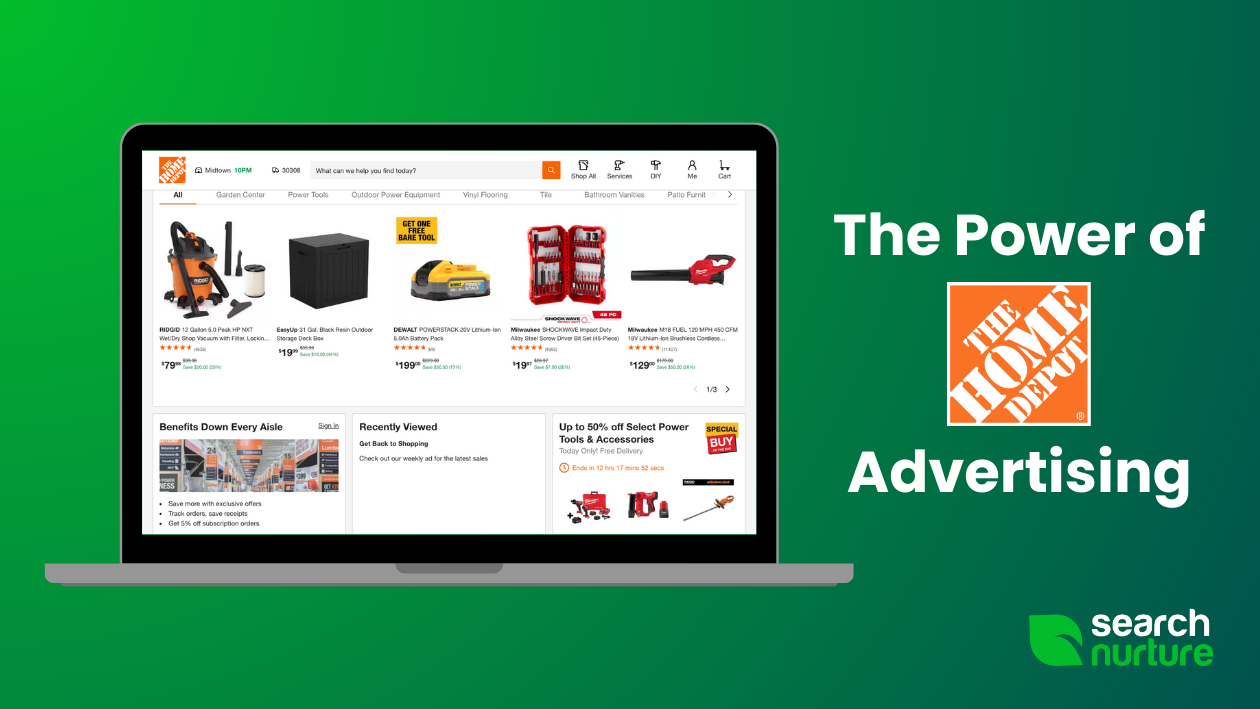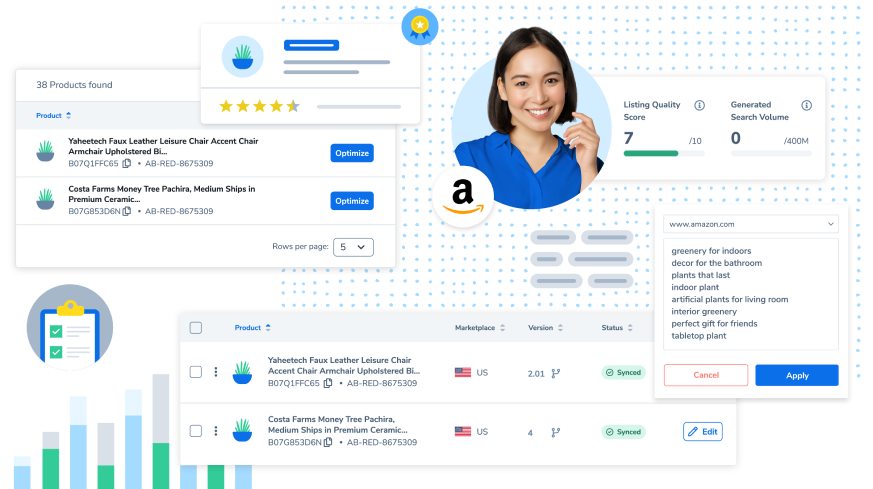During the COVID-19 pandemic, Instacart has emerged as a top online grocery service in North America, an industry that grew to almost $100 billion in 2020.
And analysts do not predict any signs of slowing, as shown in data collected by Mercatus and Incisiv for their report, eGrocery’s New Reality:
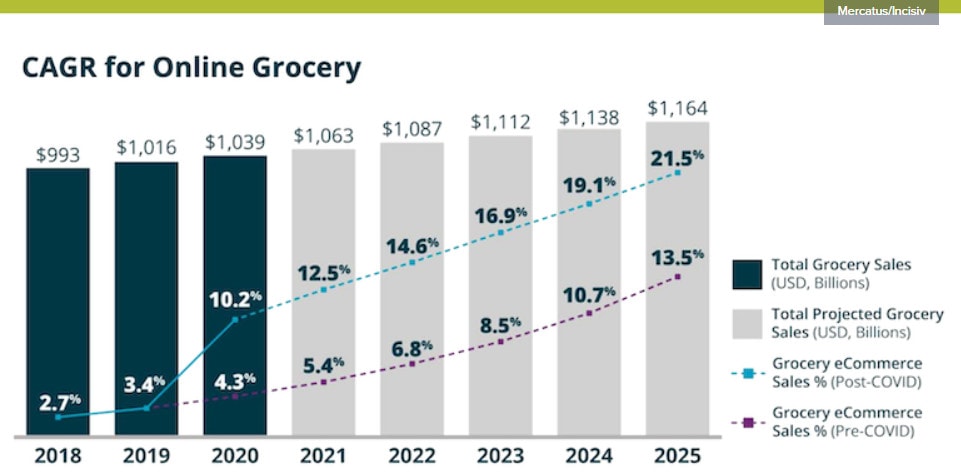
Source: Mercatus
Not only is the industry growing, but Instacart represents over half of online grocery purchases made during the last year. This fact, combined with these positive CAGR projections post-pandemic, makes Instacart advertising a retailer’s best opportunity to become a part of online grocery’s industry growth.
In this Instacart advertising guide, we’ll cover:
- What Instacart advertising is
- Why companies should utilize it
- The different ad types and budget options available for retailers
- How to advertise on Instacart to increase conversions
What is Instacart Advertising?
Instacart’s grocery pick-up and delivery services allow retailers to create “Featured Product ads.” These ads target potential buyers on Instacart who are shopping within certain keywords, as well as on other pages while they browse. Instacart offers many ways to strategize ad coverage on its platform, which we discuss in detail below.
How Instacart Advertising Works
Instacart, unlike other major online retailers, such as Amazon, does not typically attract customers who want to browse. They go to Instacart with the same intent as when they shop in a brick-and-mortar store: to buy specific products.
First, they input their location to view the supported retailers closest to them. They then choose the retailer for the pick-up or delivery and begin shopping for keywords, categories, stores, or sales. Their shopping experience could begin as simply as logging on and clicking “bread” before seeing these options available near them:
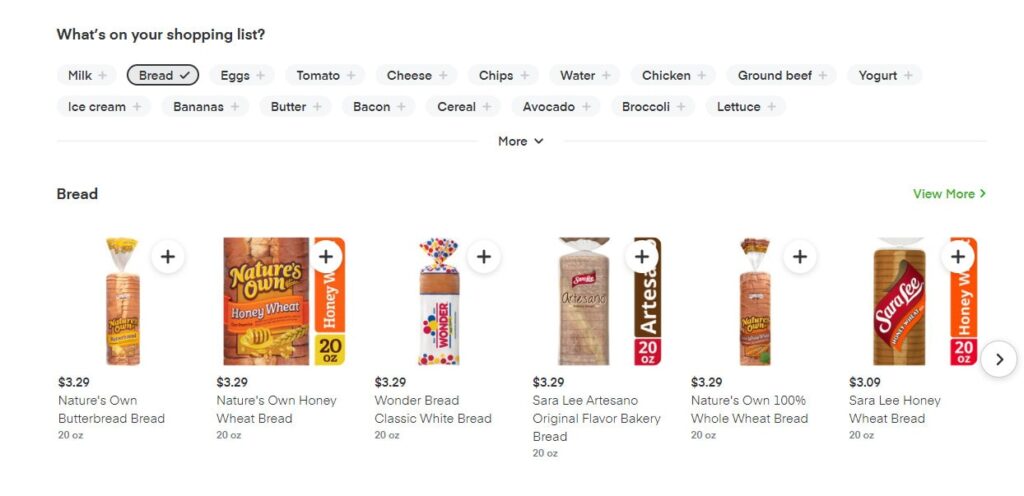
An Instacart advertising campaign can attract customers by appearing in specific search results or by guiding their shopping experience with banners and general ads on other pages, such as the buy-it-again page, or category pages like pages for “bread,” “eggs,” or “hair products.” These category pages do not just pertain to food.
Why Instacart Should be Part of Your Marketing Strategy
Instacart’s market value growth in the last year has paralleled enormous gains in the online grocery industry. Their growing status with major retailers has made their ad space a valuable asset to your marketing strategy. Consider the direction the industry is taking:
- Current growth data indicates that the number of online grocery sales has nearly doubled since 2018. Analysts expect this growth to continue throughout the 2020s:
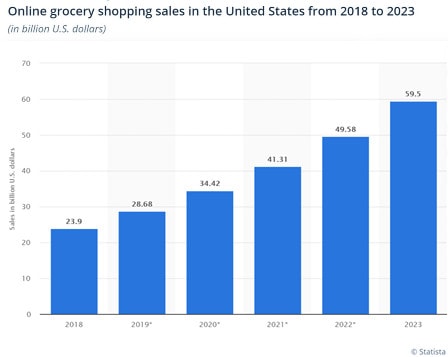
Source: Statista
- Instacart’s market value growth in 2021 has increased to $39 billion due to its growing footprint in the online grocery industry. Instacart now delivers groceries from over 45,000 retail stores in the United States and Canada, surpassing Walmart in online grocery services.
| Year | Valuation |
|---|---|
| 2016 | $2 Billion |
| 2018 | $7.6 Billion |
| 2020 | $13.7 Billion |
| 2021 | $39 Billion |
Source: Fortune
- Instacart’s potential to expand beyond groceries indicates further opportunities for growth. Its supported retailers can expand to include deliveries from dedicated beauty products, consumer electronics, pet supplies, office equipment, home improvement stores, and more.
Instacart Ad Types, Coupons, and Promotions
Instacart offers “search” and “non-search” ads to promote retail brands on its pages. The different placements, options, and audiences for these types change their effectiveness in your Instacart advertising strategy.
Instacart Search Ad Placement
Search ads appear within the results of a customer’s search. Since most Instacart purchases come from products listed in the first rows of the search results page, Instacart marketing strategies must prioritize these results.
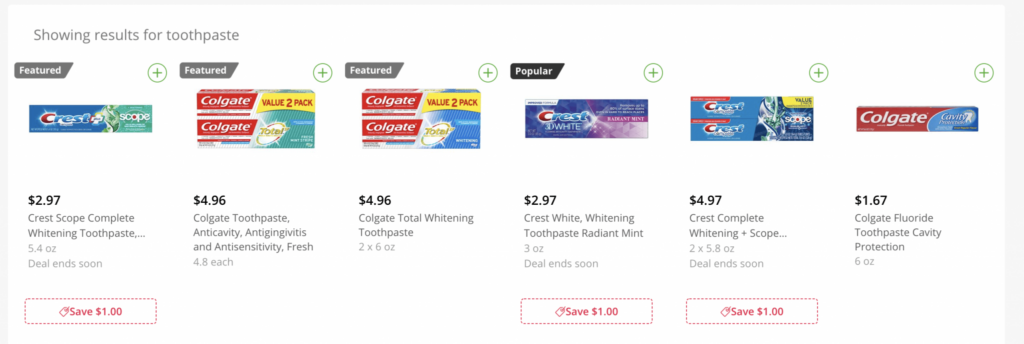
Instacart Non-Search Ad Placement
Non-search ads populate the home page, departments, and item pages. They also appear in a customer’s ”Buy It Again” section, which displays past purchases. When shoppers click on a type of product, such as “dips,” they receive non-search ads that serve as general recommendations.
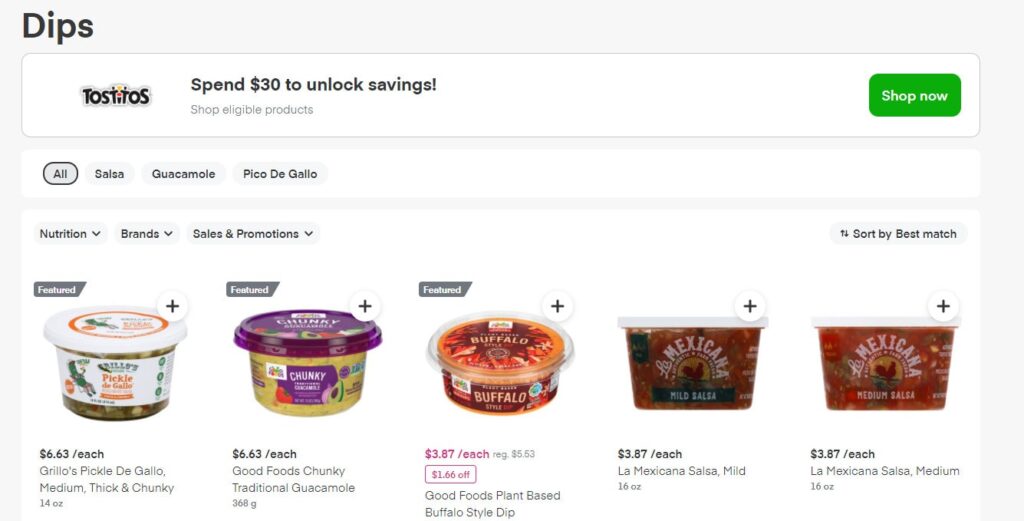
Instacart Self-Serve Featured Product Ads
Instacart’s self-serve marketing option is called a Featured Product Ad. They are similar to sponsored product placements on Walmart or Amazon, marked by a “featured” banner on the item’s thumbnail:
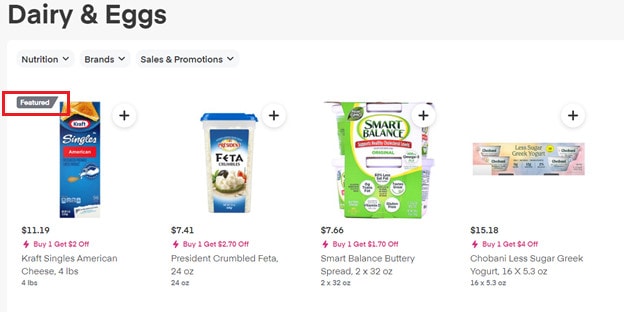
In addition to offering search or non-search ads, these ads offer two targeting options – auto and manual – to allow brands to customize their campaigns based on how ads are displayed. However, unlike Amazon and similar online retail advertising platforms, these two targeting options are controlled in the same campaign type.
For auto-targeted ads, Instacart’s algorithm decides which category pages are most relevant, and based on your bid will feature it on these pages. For manual-targeted ads, you must bid on keywords based on how competitive you want to be on specific pages (we discuss bidding in more detail below).
Optimizing Instacart Featured Product Ads
To optimize your Instacart marketing campaign, keep a few key strategies in mind:
- Instacart only uses exact keyword matches. Target search queries that perform well, rather than approximate keywords.
- Before uploading ads, make sure your unique product codes (UPC), inventory, and item descriptions are correct and up to date. Product images provided automatically by Instacart can be out of date. Check the image quality before posting the ad and contact Instacart if you notice issues.
- Use price tiers to your advantage. Optimize spending by making sure to always set higher bids on items with a higher ASP.
- Keywords added to Instacart campaigns cannot be paused, only have their bids reduced to 15 cents – be careful which keywords words you add!
Instacart Managed Advertising
Instacart managed advertising provides experienced marketers access to options not available with other ad types. These options include:
Coupons – A retailer’s sales on the products you advertise can drive its popularity. Instacart’s managed ads allow retailers to run coupons through Instacart itself. Well-trafficked items can gain a competitive edge with custom coupons.
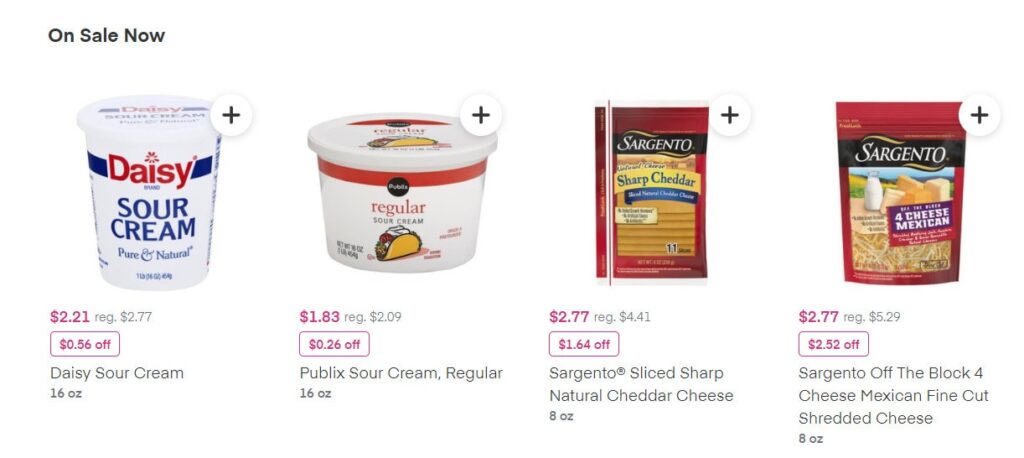
Delivery promotions – 24% of customers in any eCommerce situation are willing to spend more on their order so they can qualify for free shipping. The same logic applies to Instacart. Managed ad campaigns can offer free delivery over a certain order amount on selected products or stores to drive sales, just as they would on any eCommerce site.
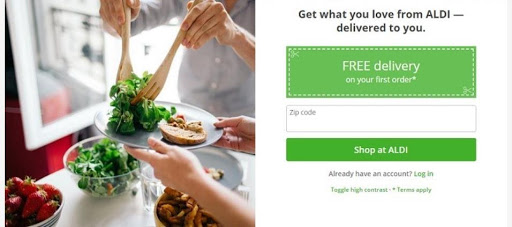
Hero banners – Hero banners pertain to specific departments or aisles on Instacart. They run at the top of individual pages and cost a fixed price per week, regardless of clicks.
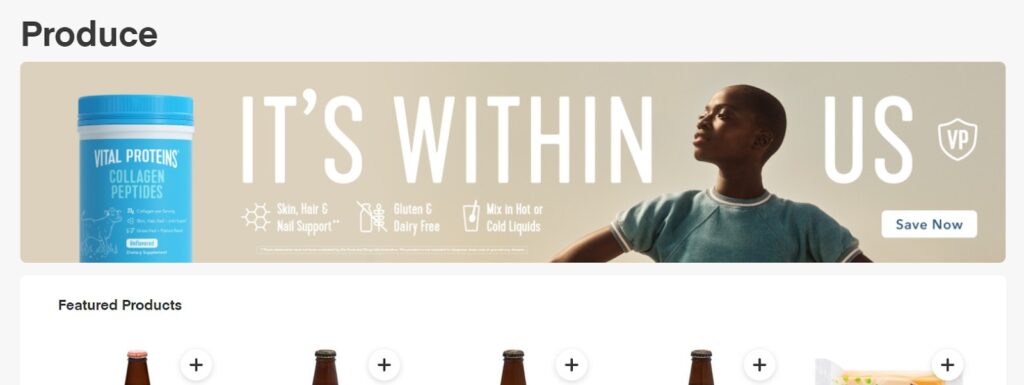
Who Can Be Targeted With These Ads?
Featured product ads favor potential new customers who search Instacart for popular keywords that match your products. Major brands use these paid ads to appear higher in Instacart’s search results.
Non-search ads, on the other hand, can be used to retarget previous buyers, and by category pages. Returning customers can view their “buy it again” page, which shows the products they have purchased before. Ads on this page can encourage previous buyers to make a similar purchase, increasing long-term brand loyalty.
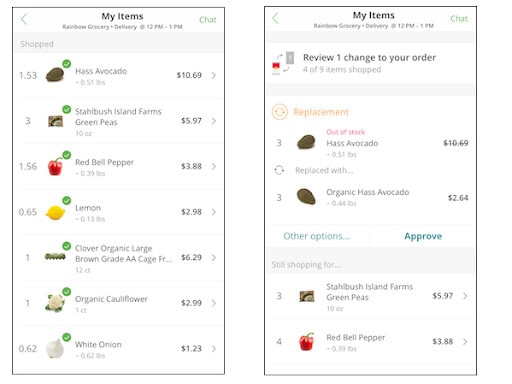
Instacart Advertising Campaign Structure
Retailers can optimize ads in their Instacart marketing campaign by separating keywords and products into groups. Since each group can be individually budgeted, prices can be customized based on the performance of the group, rather than changing the entire campaign.
Product Grouping
Ad groups within your Instacart marketing campaign can be separated in two ways: by grouping similar products or similar prices.
Grouping “Like” Products
When multiple products share keywords, they can be grouped to target the item characteristics the customer searches for. Products that share 75% or more keywords can be especially effective as product groups within a campaign.
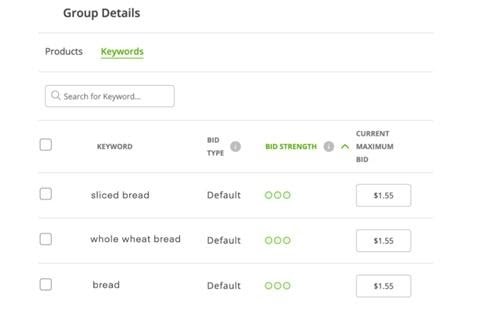
Individual Product Ad Groups
For the highest level of granular control, you can give each product its own ad group. This allows for individual control of all keyword and non-search-based bids. This is, however, a very large time commitment and is not advisable unless you have a very limited number of USPs or can use a third-party tool like Custom Dashboard for automatic bid adjustments.
Budget Profiles
In addition to options for product grouping, Instacart offers two distinct budget profiles.
Maximize Impressions
With this profile, your marketing budget will maximize impressions without any limitations on spending. There’s no spending structure with this profile, so if impressions can be maximized in just a few days, even if the budget disappears, they will be.
Paced Spending
Paced spending allows retailers to set a timeframe for their campaigns. During this time, your campaign’s budget will be spent evenly at intervals. This functions as a daily limit on spending that Instacart uses to run your ads. This profile protects your budget from depleting before scheduled, which would leave your brands without ads until you refill it.
Instacart Advertising Keyword Strategy
While Instacart advertising borrows features from Amazon, it supports keywords differently. The key differences are that Instacart only supports keywords that are exact matches, automatically harvests keywords, and does not support negative matching. Knowing these differences will help formulate effective Instacart ad campaigns.
Category Keywords
Category keywords represent advantages for retailers on Instacart vs those on Amazon. Since fewer advertisers use Instacart, the CPC for category keywords like “cheese” or “meat” is less competitive. These keywords start to make a huge difference when customers repeatedly buy your products.

Branded Keywords
Branded keywords take advantage of customer loyalty. Those who search “Bounty” rather than “paper towels” will see results like these:

Keywords specific to your products can cost less per click and produce higher ROAS. However, most brands should use branded keywords sparingly since they have less ability to convert new customers incrementally.
Remember that certain items may be out of stock at some locations and not others, make sure to run your own branded terms on similar items to provide an alternative in case they are out of stock at a particular location. Set the bids slightly lower than the primary item so that if the location has a stock of both, the primary item shows up.
Competitor Keywords
Competitor keywords represent a strategy only possible on Instacart since they opened restrictions on bidding. Bidding and stealing ad space on the keywords for your industry competition can be expensive since the CPC for these keywords is more difficult to recoup than for category keywords.
However, if they can be used to acquire long-term customers, they may offset their initially high marketing costs.
Make sure you are bidding on competitor terms, even if the bid is low. On the chance that the competitors don’t have stock at this location, this is an easy opportunity to provide your product as an alternative!
Instacart Advertising Bidding Options
Instacart allows retailers to bid on specific search terms, just as Amazon does. It uses a 2nd price auction system where your CPC will always be over the next highest bid by $0.01. Instacart allows users to place two types of bids: keyword override bids and default CPC bids.
Keyword Override Bids
By adding keywords to a campaign, retailers can target specific searches for their bids. The most efficient campaigns manage the bids for each keyword group separately.
Prioritize the relevance of each keyword to its ad group rather than the number of them that you bid for. Each ad group has a minimum bid for personalized ads as well as a keyword strength metric so you can strategize accordingly. On your ad management dashboard, it will look like this:
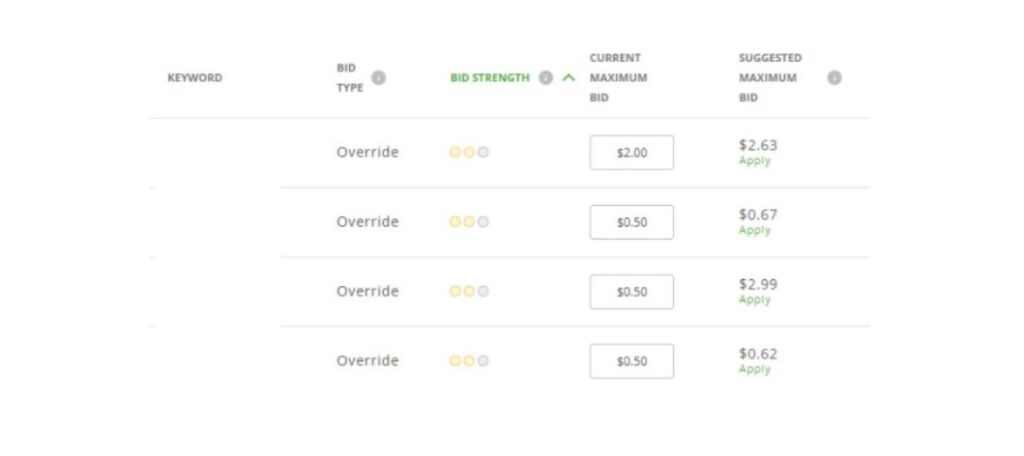
Source: SearchEngineJournal
Optimized campaigns prioritize each keyword differently depending on its strength and its value vs CPC. This allows them to optimize their bids for their budget.
Default CPC Bid
This bidding type applies to non-search-based ads on Instacart such as the:
- Home page
- Department/Aisle pages
- My Items page
Using the default CPC bid can expedite your brand’s acquisition of keywords, especially new ones automatically added by Instacart, which uses the default. The default bid applies to all of these pages and cannot be adjusted on a per-page basis.
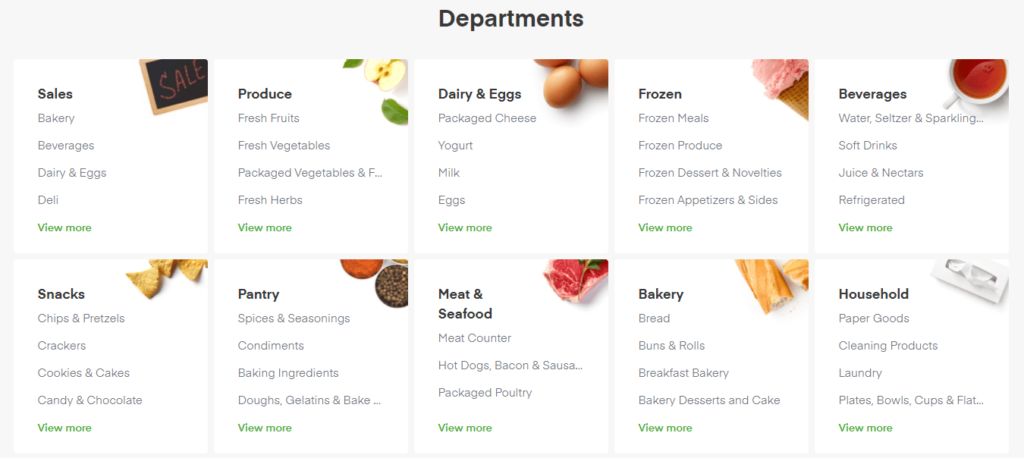
However, retailers need to know exactly which keywords apply to their default CPC bid as the system could automatically increase your bid on keywords of less value or decrease your bid on your heavy hitters.
Instacart Advertising: Performance Tracking
Ad performance can change quickly on Instacart. The input of new customers, retailers, and trends can shift the value of ads. This is why rule number one for performance tracking on Instacart is to do it as frequently as possible. Rule number two is to know the right metrics to keep track of.
Attribution
Attribution represents the amount that your ad has generated for a specific product, according to Instacart’s analytics.
Impressions
Impressions tell you how many times your ad popped up on the Instacart market, either as the result of a search or on non-search pages. If you want to know the number of successful placements on a site that uses a 2nd price auction system like Instacart, the impressions metric tells you. Your readout will look something like this:
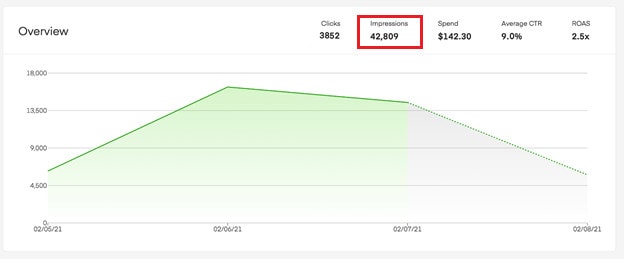
Average CTR
The CTR or clickthrough rate tells you how often shoppers clicked on your ads. This is expressed as a percentage of the total impressions for that ad. This is a metric better used to track engagement than profits.
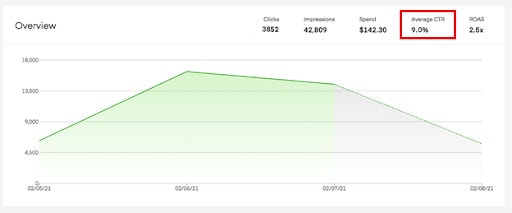
RoAS
Return on ad spend (RoAS) measures the financial impact of your ads compared to the amount you invested in them expressed as a multiplier. ROAS is a primary metric when measuring a campaign’s overall financial performance.
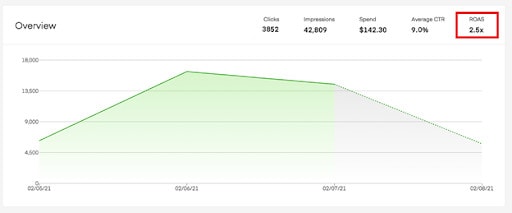
Organic Sales and Total Sales
The organic sales metric shows sales figures on Instacart compared to your company’s percentage of category share. Having a low share despite being available in thousands of retailers could indicate products that suffer from low visibility. Total sales include profits made from acquiring other brands in the last 12-year period.
Basket Penetration
Basket penetration refers to the percent of Instacart baskets that contain one of your products. If basket penetration is high yet sales are low, it means that customers are seeing your products but aren’t converting.
Reporting Tiers
On Instacart, retailers that spend more on ads gain access to more reporting metrics. This means that after spending enough ($10,000 per quarter), you gain the ability to view Regional Sales, weekly performance metrics, and other additional tools.
How to Get Started With Instacart Advertising
- Establish which products you want to direct traffic to. This could be all of them or a relatively small portion. I would recommend no more than 30 for initial testing. Start with “staple” products that do well on other paid advertising platforms. If you’re brand new to retail advertising, reach out and let us take care of it.
- Establish your initial Instacart advertising budget. Initial budgets can change immensely but a (very general) rule of thumb is to start with no greater than 10% of your top online retail ads budget.
- Create your Instacart ad campaign. Start with one campaign and separate your products into ad groups by similar products or single UPCs.
- Establish Keywords. The easiest way to do this is aggregating keywords from other platforms, but be careful, keywords in Instacart cannot be turned off after launch, only bid down to 15 cents.
- Establish Pacing. When choosing a spend method, always start with paced spending and set your end date until the end of the month. As you learn the pacing of your campaign, you can change to maximized impressions in order to be able to adjust for changes in search volume. Be warned that without automatic bid optimizations this can be very difficult!
You are now ready to launch your first campaign! Closely monitor your performance and make necessary adjustments. — This process requires quite a bit of data aggregation. That is why at Search Nurture we are able to use our cross retail platform – Custom Dashboard in order to aggregate data from various other retail ad platforms in order to give your Instacart campaigns the best start. If you would like more information than was contained in this Instacart advertising guide, you can learn more about how to get ahead with Instacart Retail Advertising Management here.


